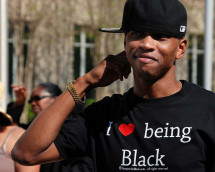A review by Tom Reifer of Great American City: Chicago and the Enduring Neighborhood Effect and The Collapse of American Criminal Justice Robert J Sampson and William Stuntz, respectively.
The structural circumstances of deprivation and criminalization facing African-Americans that they both highlight, and the related racialized perceptions of criminality that are counterparts, appear to be some of the salient features that recently led to the murder of a young black teenager, Trayvon Martin, in the US state of Florida.
Florida is one of many US states with new Stand Your Ground laws which have proliferated across the country, along with a noticeable uptick in so-called ‘justified homicides’. In this instance the inequalities of race and space highlighted by these two authors tragically came together as a neighborhood watch patrolman shot and killed Trayvon and shaped the lack of an initial official response, until massive protests broke out across the US against the failure of authorities to charge the assailant with a crime (Sampson, 2012; Sampson and Raudenbush, 2004). This review essay presents these two landmark books, offering an appreciation and critique of their interrelated arguments and setting them in the context of a wider literature on the evolution of spatial, social class, and racial relations right up to our contemporary present.
Sampson’s book is arguably one of the greatest works of urban sociology, critical criminology, and what Soja (2011) calls “postmodern geography” in a generation, radically altering these entire fields. Highlighted here in particular is the “neighborhood effect”, referring to the relationship between race, class, space, and punishment’s place in the US, which with only 5% of the world’s population, has 25% of its prisoners. This carceral boom is the latest, and perhaps one of the most troubling, forms of American exceptionalism, with a widening divide since the 1970s between the US and other advanced capitalist states (albeit one that has been narrowing as of late).
Download the pdf to read the full review.
“The Reassertion of Race, Space & Punishment’s Place in Urban Sociology & Critical Criminology,” Review Essay, Robert J. Sampson, Great American City: Chicago & the Enduring Neighborhood Effect, Chicago: University of Chicago Press, 2012 & William Stuntz, The Collapse of American Criminal Justice, Cambridge: Harvard University Press, 2011, Environment & Planning D: Society & Space, Volume 31, April 2013, pp. 372-380


